12 Disney Direct-To-Video Sequels Moments That Alter The Original Films
Disney has long been known for its direct-to-video sequels. From Cinderella, and Lion King to Frozen, they all have their new sequels. And they tend to draw attention thanks to the success of the original part.
Be that as it may, Disney’s direct-to-video sequels are “hit or miss”. They may float the boat of fans with their interesting stories. But they may also suffer under the lash as the continued narrative may destroy the feeling about the original one. In fact, most viewers tend to compare the original and sequel parts and realize that the original ones are still the best.
It seems that the sequel parts tend to be so different from the original one, spoiling the feeling of the previous one. Many direct-to-video sequels moments even completely alter the original version. For example, Iago from Aladdin is the heel character in the original part, yet turns his face in the sequels. Although viewers may feel happy about that, others seem not able to accept the change in this character.
In this post, we highlight 12 Disney famous direct-to-video sequels moments that change the original films. Scroll down to check them out, and share with us your opinion. Will you love the change or that make you hope you hadn’t seen that?
Unfortunately, for some reason, Ariel has severed all contact with her mermaid family and is adamantly opposed to introducing Melody to their way of life. Melody has no idea mermaids exist until Ursula's sister, the malevolent sea witch Morgana, appears and offers her yet another magical deal with fine print.
Kiara and Kovu experience a love tale similar to that of Simba and Nala. Kovu is an outsider and resembles Scar, thus Simba restricts their relationship because of this. Thankfully, Rafiki, Disney's Yoda before acquiring Star Wars, is still useful in The Lion King II.
After a few movies, we learn that Cassim, who some online users like to refer to as "Aladdin's hot dad," is actually still alive. Furthermore, he is the so-called "King" of the Forty Thieves, a group that attempted to steal a certain item of wealth at Aladdin and Princess Jasmine's wedding.
Mulan, a hopeless romantic, and the tyrannical Shang become engaged and frequently quarrel. In addition, Mushu separates them since he is furious about not being Mulan's guardian once she marries Shang. Although Mulan's individuality has been lost and Mushu hasn't learned anything from the first movie, at least the songs are fantastic.
Iago believes that he is the one who devises all of the plans. He decides to go it alone as a result, which creates a redemptive character arc and places him in the same category as the heroes of the other Movies and TV shows. No one is hopeless—Jafar is the exception.
The movie provides some context for the meerkat and warthog, as well as a mic-drop-worthy revelation: Rafiki's wise words are what inspired Timon, Pumbaa, and Simba's personal hymn and theme song, "Hakuna Matata," which means "no worries" in Swahili. Actually, this doesn't surprise us at all.
The Hunchback of Notre Dame II robs Quasimodo of his self-assurance, erasing his character development. In this rom-com that completely undermines the message of the original movie (even if it believes it's accomplishing the opposite with a love interest who's "too pretty"), it's a wonder that he isn't still hiding out with his gargoyles.
Prince Charming temporarily gives in to the circumstances surrounding the slipper, while being almost confident that Anastasia is not his only true love. When he starts to lose faith in the slipper law, Lady Tremaine/Wicked Stepmother uses the Infinity Wand to transform Anastasia into Cinderella. True love can still not be defeated by it, though. Once Anastasia realizes the folly of her actions, the story has a happy conclusion in which Cinderella and Prince Charming marry, and Anastasia extinguishes the evil stepsister's reputation.
The midquel, which takes place right after Bambi's mother dies, describes how Bambi and his father become closer when the latter becomes a young buck, demonstrating how more involved the Great Prince of the Forest is. Even so, that just a little bit helps us feel better about the entire "dead mom" situation.
The Beast goes full Ebenezer Scrooge in Beauty and the Beast: The Enchanted Christmas, which is set within the first movie (following the battle with the wolves), and forbids Christmas because he was ostensibly cursed during the holiday season—something that is not made clear in the first movie. Of course, despite an evil organ's attempts to remain an evil organ, Belle, Cogsworth, Lumiere, Mrs. Potts, and company infuse in him some holiday spirit.
To persuade the English monarch to stop killing her people, Pocahontas travels to England with her first enemy, John #2. This ultimately leads to a very awkward love triangle that is filled with longing glances.
Be that as it may, Disney’s direct-to-video sequels are “hit or miss”. They may float the boat of fans with their interesting stories. But they may also suffer under the lash as the continued narrative may destroy the feeling about the original one. In fact, most viewers tend to compare the original and sequel parts and realize that the original ones are still the best.
It seems that the sequel parts tend to be so different from the original one, spoiling the feeling of the previous one. Many direct-to-video sequels moments even completely alter the original version. For example, Iago from Aladdin is the heel character in the original part, yet turns his face in the sequels. Although viewers may feel happy about that, others seem not able to accept the change in this character.
In this post, we highlight 12 Disney famous direct-to-video sequels moments that change the original films. Scroll down to check them out, and share with us your opinion. Will you love the change or that make you hope you hadn’t seen that?
#1 Ariel Changes Back Into A Mermaid - The Little Mermaid II: Return to the Sea (2000)
 Source: Walt Disney Home Video
Source: Walt Disney Home Video
Unfortunately, for some reason, Ariel has severed all contact with her mermaid family and is adamantly opposed to introducing Melody to their way of life. Melody has no idea mermaids exist until Ursula's sister, the malevolent sea witch Morgana, appears and offers her yet another magical deal with fine print.
#2 Simba Discriminates - ‘The Lion King II: Simba’s Pride’ (1998)
 Source: Walt Disney Home Video
Source: Walt Disney Home Video
Kiara and Kovu experience a love tale similar to that of Simba and Nala. Kovu is an outsider and resembles Scar, thus Simba restricts their relationship because of this. Thankfully, Rafiki, Disney's Yoda before acquiring Star Wars, is still useful in The Lion King II.
#3 Aladdin's Father Is Revealed To Be Alive - Aladdin and the King of Thieves (1996)
 Source: Walt Disney Home Video
Source: Walt Disney Home Video
After a few movies, we learn that Cassim, who some online users like to refer to as "Aladdin's hot dad," is actually still alive. Furthermore, he is the so-called "King" of the Forty Thieves, a group that attempted to steal a certain item of wealth at Aladdin and Princess Jasmine's wedding.
#4 Mushu Breaks Up Mulan And Shang - Mulan II (2004)
 Source: Walt Disney Home Entertainment
Source: Walt Disney Home Entertainment
Mulan, a hopeless romantic, and the tyrannical Shang become engaged and frequently quarrel. In addition, Mushu separates them since he is furious about not being Mulan's guardian once she marries Shang. Although Mulan's individuality has been lost and Mushu hasn't learned anything from the first movie, at least the songs are fantastic.
#5 Iago Is A Good Guy - 'The Return of Jafar' (1994)
 Source: Walt Disney Home Video
Source: Walt Disney Home Video
Iago believes that he is the one who devises all of the plans. He decides to go it alone as a result, which creates a redemptive character arc and places him in the same category as the heroes of the other Movies and TV shows. No one is hopeless—Jafar is the exception.
#6 Rafiki Teaches Timon And Pumbaa About 'Hakuna Matata' - 'The Lion King 1 1/2'
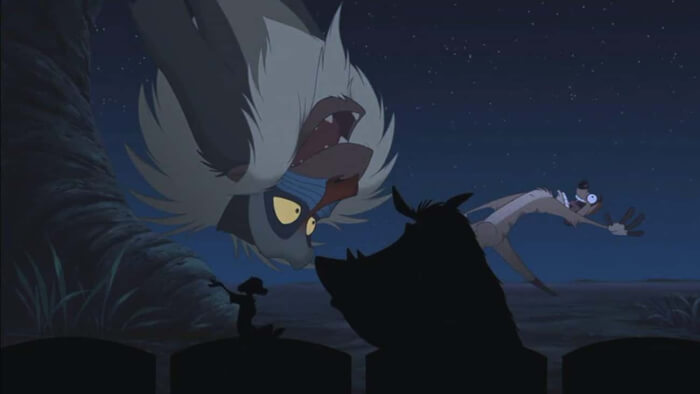 Source: Walt Disney Home Entertainment
Source: Walt Disney Home Entertainment
The movie provides some context for the meerkat and warthog, as well as a mic-drop-worthy revelation: Rafiki's wise words are what inspired Timon, Pumbaa, and Simba's personal hymn and theme song, "Hakuna Matata," which means "no worries" in Swahili. Actually, this doesn't surprise us at all.
#7 Quasimodo Has No Self-Confidence - The Hunchback of Notre Dame II (2002)
 Source: Walt Disney Home Entertainment
Source: Walt Disney Home Entertainment
The Hunchback of Notre Dame II robs Quasimodo of his self-assurance, erasing his character development. In this rom-com that completely undermines the message of the original movie (even if it believes it's accomplishing the opposite with a love interest who's "too pretty"), it's a wonder that he isn't still hiding out with his gargoyles.
#8 The Glass Slipper Fits Anastasia Instead - Cinderella III (2007)
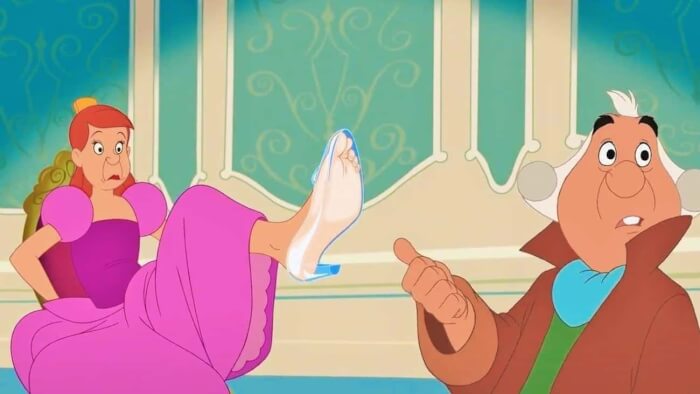 Source: Walt Disney Studios Home Entertainment
Source: Walt Disney Studios Home Entertainment
Prince Charming temporarily gives in to the circumstances surrounding the slipper, while being almost confident that Anastasia is not his only true love. When he starts to lose faith in the slipper law, Lady Tremaine/Wicked Stepmother uses the Infinity Wand to transform Anastasia into Cinderella. True love can still not be defeated by it, though. Once Anastasia realizes the folly of her actions, the story has a happy conclusion in which Cinderella and Prince Charming marry, and Anastasia extinguishes the evil stepsister's reputation.
#9 Bambi And His Father - Bambi II (2006)
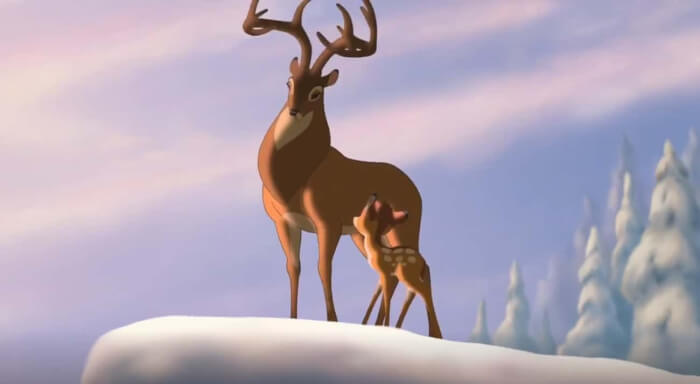 Source: Walt Disney Studios Home Entertainment
Source: Walt Disney Studios Home Entertainment
The midquel, which takes place right after Bambi's mother dies, describes how Bambi and his father become closer when the latter becomes a young buck, demonstrating how more involved the Great Prince of the Forest is. Even so, that just a little bit helps us feel better about the entire "dead mom" situation.
#10 The Beast's Curse Is Tied To Christmas - Beauty and the Beast: The Enchanted Christmas (1997)
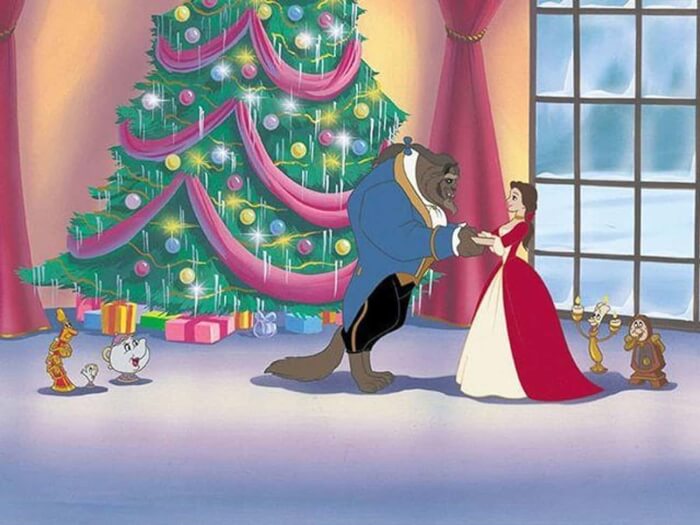 Source: Walt Disney Home Video
Source: Walt Disney Home Video
The Beast goes full Ebenezer Scrooge in Beauty and the Beast: The Enchanted Christmas, which is set within the first movie (following the battle with the wolves), and forbids Christmas because he was ostensibly cursed during the holiday season—something that is not made clear in the first movie. Of course, despite an evil organ's attempts to remain an evil organ, Belle, Cogsworth, Lumiere, Mrs. Potts, and company infuse in him some holiday spirit.
#11 Yzma Is Human Again - Kronk's New Groove (2005)
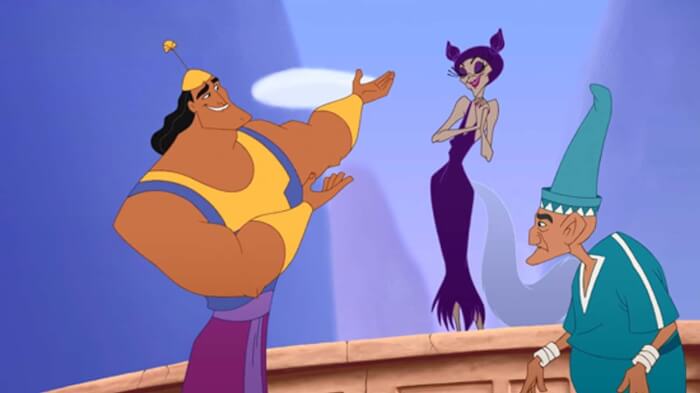 Source: Walt Disney Home Entertainment
Source: Walt Disney Home Entertainment
#12 Pocahontas Doesn't End Up With John Smith - Pocahontas II: Journey to a New World (1998)
 Source: Walt Disney Home Video
Source: Walt Disney Home Video
To persuade the English monarch to stop killing her people, Pocahontas travels to England with her first enemy, John #2. This ultimately leads to a very awkward love triangle that is filled with longing glances.
Share this article
Advertisement